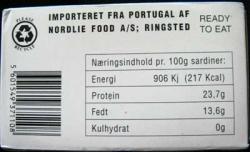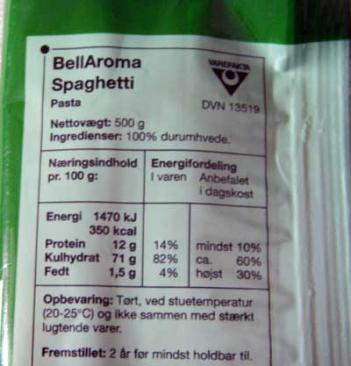It takes energy to live. The more an organism moves, and the greater the mass it has to move, the more energy is required. We eat, that food is broken down, and much of that is delivered into our cells to the structures called mitochondria. In the mitochondria, energy is obtained from that food. The energy is used for movement (even just small muscle movements such as for breathing during sleep) and the extra energy is set aside for later, as fat. An individual’s "field metabolic rate” can be calculated, and has been determined for many animals. Those of us that are considered to be ‘couch potatoes’ have a lower field metabolic rate, than those of us that are considered ‘athletic’.
Food labels give an indication of the energy that specific fuel provides the body that consumes it.

Although concerned with Little auk diet, there are opportunities to compare it to the human diet.
*Different foods offer different energy values. *
In the same way, different zooplanktons consumed by Little auks contain different amounts of energy. It has been calculated that the field metabolic rate (FMR) of the Little AukThe Little Auk is the most abundant seabird species in the Atlantic with the largest colonies located between 70-80° N on the Arctic islands of Greenland and SpitsbergenSpitsbergen is the largest island in the Norwegian High Arctic archipelago of Svalbard. To see a map of Spitsbergen and Svalbard click here.. The Little Auk belongs to the Auk family, a diverse group of seabirds in the Northern hemisphere that include the puffins, auklets and guillemots. To read more about the little auk, see pictures and and listen to the bird’s call click here. is 47.2 watt/Kg. The field metabolic rate of the Emperor penguin is 4.7 watt/kg.
Field metabolic rate = the amount of energy expended due to all field activities- "normal life energy expenditure”.
QUESTIONS:
1) What is the difference in FMR between the two species?
2) Why do you think such differences occur?
The field metabolic rate of Little Auks is 620 kJ/day. Converted to KJ/day the Little AukThe Little Auk is the most abundant seabird species in the Atlantic with the largest colonies located between 70-80° N on the Arctic islands of Greenland and SpitsbergenSpitsbergen is the largest island in the Norwegian High Arctic archipelago of Svalbard. To see a map of Spitsbergen and Svalbard click here.. The Little Auk belongs to the Auk family, a diverse group of seabirds in the Northern hemisphere that include the puffins, auklets and guillemots. To read more about the little auk, see pictures and and listen to the bird’s call click here. uses 4133 KJ/day/kg of body mass.
In comparison:*
Albatross uses 866 KJ/day/kg
Cormorants = 672 KJ/cay/kg
Eider= 1020 KJ/day/kg
Since the assimilation efficiency of food is about 0.8 (80%), Little Auks need to consume 620J/day X 1.2. The average caloric value per individual prey item (individual copepod zooplankton) = 25.3 KJ/g.
3) What is the prey mass (in grams), an individual Little AukThe Little Auk is the most abundant seabird species in the Atlantic with the largest colonies located between 70-80° N on the Arctic islands of Greenland and SpitsbergenSpitsbergen is the largest island in the Norwegian High Arctic archipelago of Svalbard. To see a map of Spitsbergen and Svalbard click here.. The Little Auk belongs to the Auk family, a diverse group of seabirds in the Northern hemisphere that include the puffins, auklets and guillemots. To read more about the little auk, see pictures and and listen to the bird’s call click here. needs to consume during the breeding season?
4) Given that the prey mass of one prey is an average of .48 mg, how many prey must an individual eat per day to compensate its own daily energy expenditure?
5) An individual spends an average of 2.7 hours (9600) per day foraging under water? How many prey items must an adult catch per second?



Comments